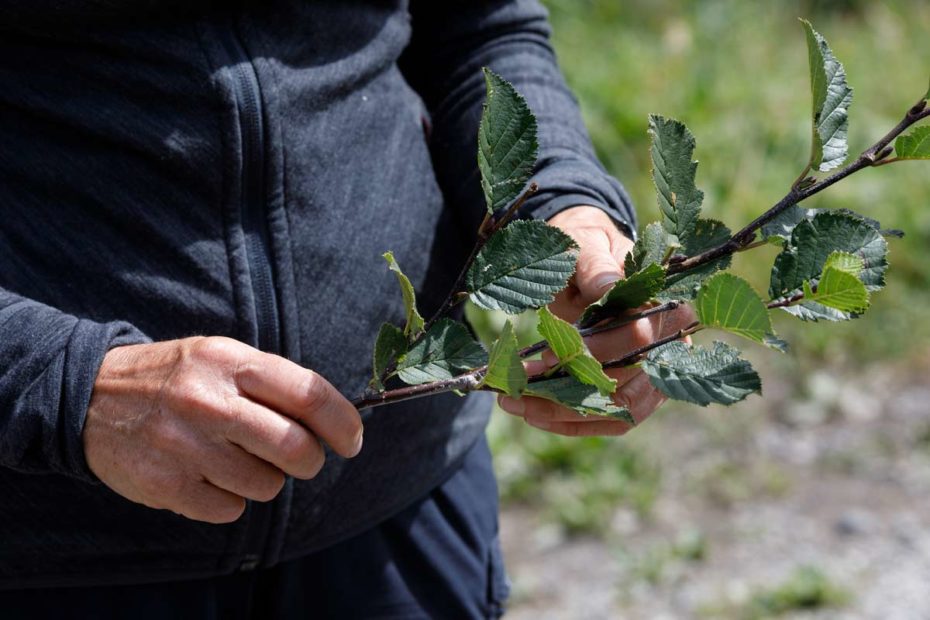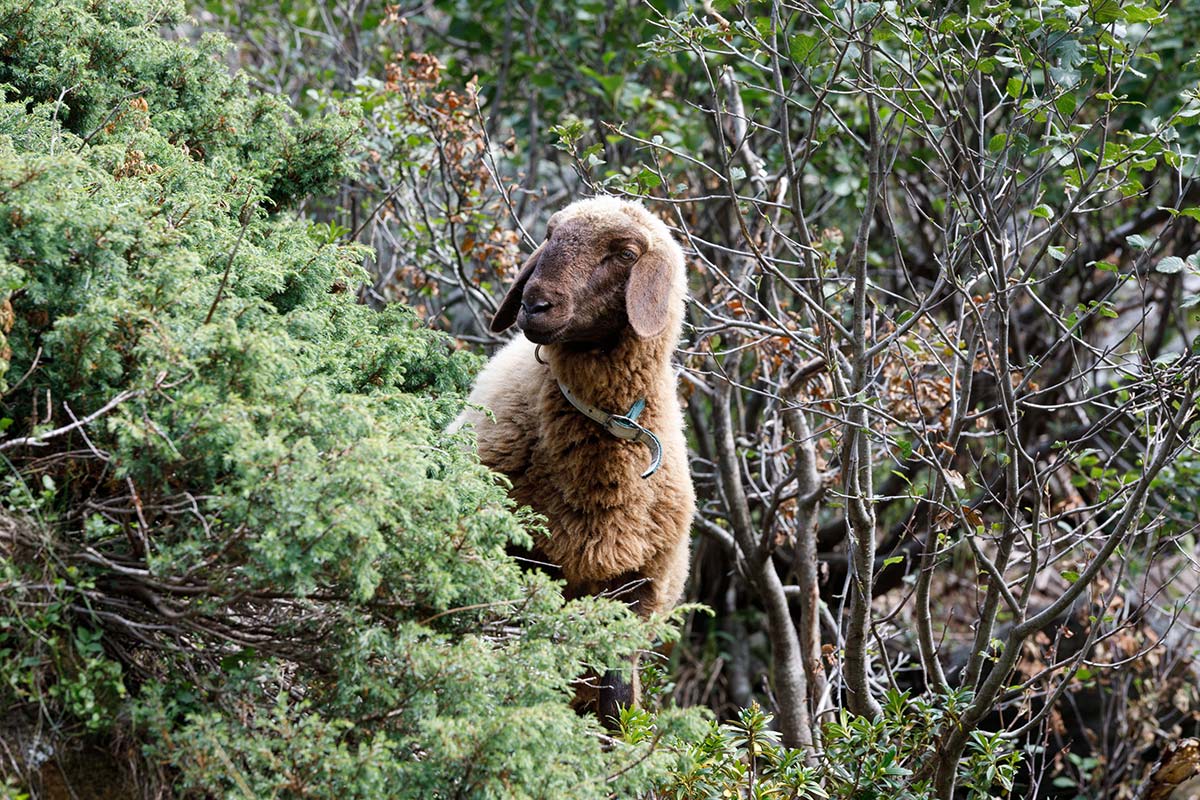
This is a branch of the green alder. Do you think it is just pretty greens? Then you haven’t heard Prof. Christian Körner’s speech about this plant last week. We would like to sum it up here, because the story he told us is very illuminating, talking of human intervention in nature and its consequences.
First of all it’s a story about a very successful bush, the green alder, growing vigorously in the alps at all places that are not covered by forest or not cultivated as pastures. Originally, its habitat was limited to narrow stream valleys or avalanche slopes, the rest of the mountain landscape was covered by forests up to tree limit.
Here it starts to be a story of human intervention: when humans started populating the remote areas and high valleys they survived basically self-sufficient by livestock and dairy farming, no other agriculture was possible in this climate and on this ground. Therefore forests were cut down to give way to cultivated pastures. So, it’s a story about culture, too: the knowledge of living with animals and of the cultivation of the land, fostering pastures of rich biodiversity.
The last decades, this lifestyle and culture in Central Europe has diminished rapidly, global economy rules and the low prices for meat and dairy-products make it senseless for farmers in mountain regions to keep animals and sell their products. Other economic possibilities like tourism are far more profitable. And so, pastures are abandoned and the green alder takes their place, leading to a bush encroachment of large areas.
Once the green alder has taken over, it prevents other plants from growing by a very strong and self-fertilized net of roots, reducing biodiversity and leading to an overfertilization of the ground. Moreover, this plant consumes plenty of water and produces plenty of N20 – a gas which is 298 times more climate-damaging than CO2. At last, this bush is of no use against avalanches and landslides, and prevents the original inhabitants of the landscape – the trees – from growing there again.
So, this, as Prof. Körner points out, is not “Nature taking over”, but it is “nature out of balance”. This implies that there is not only a responsibility for an intervention in nature, but also a responsibility for abandoning, stopping the intervention.
How can we, how can communities concerned take on this responsibility?
At this point, a friendly, robust and self-sufficient hero enters the story: a sheep. A special, old race of mountain sheep (Engadiner Schaf) which loves the bark of the green alder as a diet. Peeling its bark is deadly to this plant, which can’t be killed by being cut down or by any other known way. So, as Prof Körner’s research team has found out, there is a remedy to the “bush of hell”, and we would be well advised to cultivating it. The communities would have the choice to grow forests again, or to go back to cultivating pastures, giving the story a new turn.

By the way: the sheep’s meat is juicy and delicious, and totally organic!
Good for us, after all! The green alder and the “Engadiner Schaf” are showing us a way to a new understanding of landscape use, of responsibility, and of making a difference as consumers.

